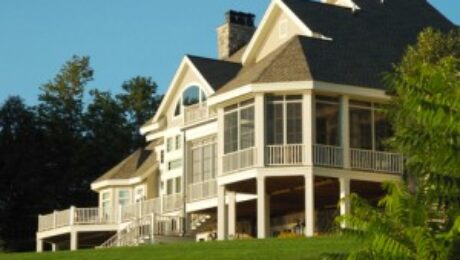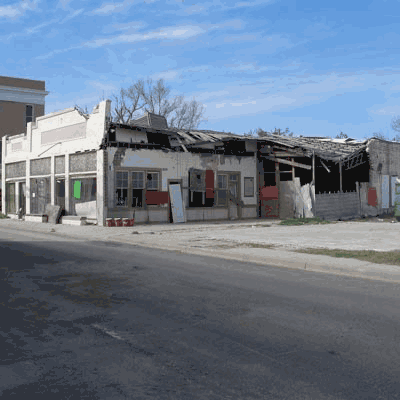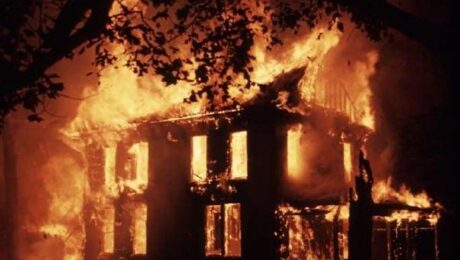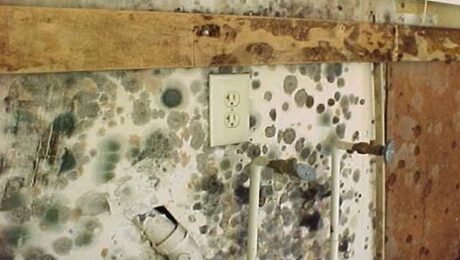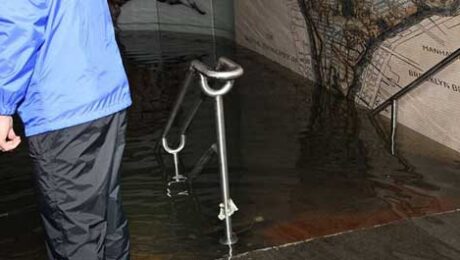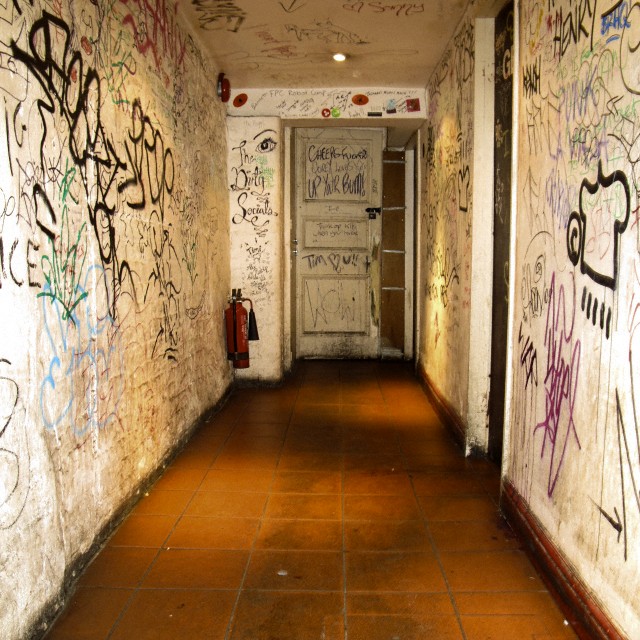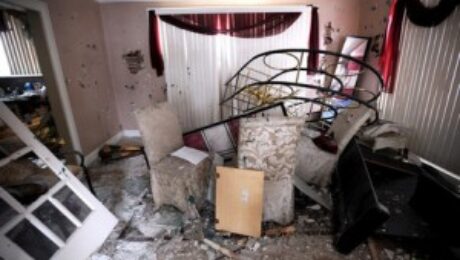Property damage types handled by All American Public Insurance Claim Adjusters
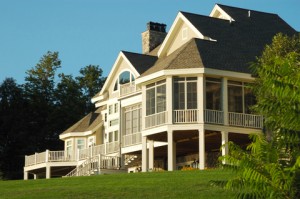 All American Public Adjuster handle Residential claims big or small we have local licensed adjuster thru out the country to assist homeowners with their Insurance claim. We will come to you and interpret the policy and see if you have the coverage needed to open a claim. Don’t rush to open the claim first find out you if you have the right coverage. “No Recovery No fee”
All American Public Adjuster handle Residential claims big or small we have local licensed adjuster thru out the country to assist homeowners with their Insurance claim. We will come to you and interpret the policy and see if you have the coverage needed to open a claim. Don’t rush to open the claim first find out you if you have the right coverage. “No Recovery No fee”
Why Hire a Public Adjuster? Public Adjuster were created by the state realizing homeowners and business owners were not familiar with policy language and Coverages. Representation is the key factor because the burden of proof lies on the policy holder in insurance claims. Insurance companies will send their own adjuster you should have one representing your best interest.
What is Covered on a Homeowners Policy?
A basic homeowners insurance policy will cover the following types of loss:
Fire, Wind, Water, Hail,Sink Holes, Roof Damage,Plumbing problems & Flood Damage
- Additional Living Expenses
- Personal Property & Contents
- Dwelling & Building
If your home acquires loss your insurance company is liable to cover the loss.
If your property is not safe for occupancy, keep receipts for all additional living expenses associated with your relocation, such as emergency shelter, clothing, and food. These extra costs will be covered under your policy.
In addition, any damaged items that occur due to the loss will be covered. It will be important to document any personal property that is damaged. If possible, take photographs of the damage, and don’t for get to list everything!
Lastly, your dwelling is covered by your insurance policy. This includes any structural damage to your home or other buildings on your premises, like a garage, tool shed, or in-ground swimming pool in addition to your home. If you acquire any damage to any structure, your insurance company is liable for the damages.
What Isn’t Covered on a Homeowners Policy?
Trees and Shrubbery/Debris Removal
Trees, shrubs, and other plants are insured on a limited basis. Make sure you speak with your agent concerning the amount of coverage you have if any.
Water Damage
Homeowners policies do not cover flood damage, but they do cover other kinds of water damage. For example, they would generally pay for damage from rain coming through a hole in the roof or a broken window, as long as the hole was caused by strong winds or any other covered exposure listed in the policy. If there is water damage, check with your insurance company representative as to whether it is covered. (Flood insurance can be purchased as a separate policy in addition to your homeowners policy.)
Neglect
If your insurance company can find any reason to file your claim as neglect then they can deny your claim. Make sure that if damage occurs that you deal with it promptly. Also, maintenance – general upkeep – is essential to get reimbursed for loss.
Common Types of Residential Claims:
- Storm Damage
- Hail/Wind/Water Damage
- Fire Damage
- Water Damage
- Pipe break
- A/C Leak
- Dishwasher Leak
- Theft/Vandalism Damage
- Roof Leaks
- Hail/Wind/Water Damage
Get the Experts Involved
The claim filing process and ensuring full reimbursement can be a stressful and complicated process. Hiring a licensed Public Adjuster at All American Public Adjusters, will maximize your insurance claim and minimize stress. The professional team at AAPA will take over your claim and give you peace of mind in the midst of loss.
[representyouinsurancepolicies] [footer1]- Published in Damage Types
Commercial Property Damage Claims
Commercial property damage differs greatly from residential property damage. After having to deal with such disasters as a fire, hurricane, or water damage to your business, it is time to call All American Public Adjusters, Inc.
All American Public Adjusters, Inc are knowledgeable licensed adjuster that can help you collect money for your property damage. Unlike residential claims, commercial claims consist of vital business recovery decisions, damage mitigation, business interruption calculations, and loss detail for your insurance carrier. It is not a good idea for an individual owner to handle these items without a licensed trained professional guiding you through the process.
All American Public Adjusters, Inc. handles all types of commercial damage such as: Restaurants, Hotels, Motels, Condominium Buildings, Apartment Complex, Town home Communities, Shopping malls, and Small and Large Buildings. We can help you by evaluating your commercial policy and ascertain the greatest approach for presenting your claim, documenting and validating every detail of your damage, and negotiating with your insurance carrier in your behalf to make the claims procedure an equitable and peaceful experience.
Businesses are vulnerable to devastating financial losses should they suffer
property damage, as this can bring a company’s operations to a complete stop.
Commercial property owners need to respond quickly to address the loss. Most
business owners have commercial property insurance policies in place to finance
these repairs, but frustratingly, some insurance companies do not fully reimburse
business owners or they deny claims. The professional team at All American Public
Adjusters, helps business owners daily with their insurance claim needs. Due to the
nature of a commercial claim, hiring a Public Adjuster will ensure that your business
is full reimbursed for any and all damages. Some of the types of business that we
help in settling loss are as follows:
 |
Restaurants
Hotels/Motels
Condominium Buildings
Apartment Complex
Town home Communities
Shopping malls
Small Business Buildings
Farms
Without proper planning and expertise, a business owner may not fully recover the
loss that occurred to the commercial property. We can help you by evaluating your
commercial policy and ascertain the greatest approach to settle your claim. The
experts at All American Public Adjusters are knowledgeable licensed adjusters that
can help maximize your claim and minimize the stress. Unlike residential claims,
commercial claims consist of vital business recovery decisions, damage mitigation,
business interruption calculations, and loss detail for your insurance carrier. Let
the insurance experts take over your claim and give you peace of mind that your
business will be covered.
All American Public Adjusters, Inc. handles all types of commercial damage such as: Restaurants, Hotels, Motels, Condominium Buildings, Apartment Complex, Town home Communities, Shopping malls, and Small and Large Buildings. We can help you by evaluating your commercial policy and ascertain the greatest approach for presenting your claim, documenting and validating every detail of your damage, and negotiating with your insurance carrier in your behalf to make the claims procedure an equitable and peaceful experience.
Regardless of the type of damage that you have experienced in your home or commercial property, a licensed public adjuster can help you collect more money on your insurance claim. Even if your insurance claim has been denied by the insurance company, All American Public Adjusters, Inc. can help you re-open a claim with your insurance company. If your insurance company settled your claim and sent you a check which did not entirely cover your damages, you have a legal right to receive a free consultation to see if your claim can be re-opened in order to receive a fair settlement for your property damage..
[footer1]
- Published in Damage Types
Everyday families witness the types of horror that a fire presents and never thinks it might happen to them. Unfortunately, many people do not understand or realize the true nature of fire and what it can do. Every year more than 4,000 Americans die and approximately 20,000 people are injured in fires. If more people were aware of how to prevent fires, less and less incidents would occur.
According to the National Fire Protection Association (NFPA), there are a few simple facts that homeowners should know in order to reduce fire deaths.
- Fire is FAST! (There is little time!)
Most fires occur in homes where people are usually asleep. If you happen to wake up to a fire, you have very little time to take valuables because fire spreads very quickly and the smoke is extremely thick. In 30 seconds or less a small flame can become completely out of control and turn into a major fire. The only time you have is to escape!
- Fire is HOT! (Heat from a fire is more dangerous than flames.)
When a fire hits a room, temperatures can be 100 degrees at floor level to 600 degrees at eye level. The heat alone can kill individuals. Inhaling this extremely hot can burn your lungs. It can even melt the clothing you wear to your skin. Once a fire hits a room, everything can ignite at once, in under 5 minutes, which is also known as a flash over.
- Fire is DARK! (Fire isn’t bright, its PITCH BLACK!)
Fire begins by looking like a bright light, and rapidly produces black smoke and total darkness. Because of the extreme darkness, if you were to wake up to a fire, you may be blinded, perplexed and unable to find your way around your own home.
- Fire is Deadly! (Flames kill less people than Smoke and Toxic gases.)
We all need oxygen to breathe, but when a fire hits, it uses up all of the oxygen you need and ends up producing fatal smoke and poisonous gases. Because the fumes are colorless and odorless, they can get you into a deep sleep before the flames even reach your door and cause you not to wake up in time to evacuate your home.
In the event of a fire remember that time is not on your side and every second counts. Be sure to evacuate your home first, and then call for help. Be sure to design a fire evacuation plan for your home to meet outside. Make sure that you each member of your family has two known ways of escaping in case there is a fire. Also, try to practice this with your family and remember to always crawl low under the smoke and keep your mouth covered. Never return to your home for any reason. Your life will be at risk. Lastly, be sure that your home fire alarm is working and be sure to test it regularly. It will increase your chances of surviving a fire!
Our Adjusters Have Handled a Variety of the Following Types of Fire Damage Losses
Commercial Fires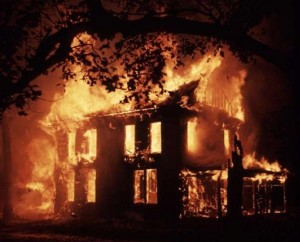
Condominium Fires
Residential Fires
Business Fires
Chimney Fires
Electrical Fires
Kitchen Fires
Cooking Fires
Barbecue Fires
Grease Fires
Smoke Damage
Brush Fires
Fires from lightning
Near Total Loss Fires
Rental Apartment Fires
Arson
Heater Malfunctions
Fireplace
Fire Exposure
(from your house of your Neighbors)
Cooking appliances
Accidental Fires
(eg. cigarettes, child mishaps, etc)
- Published in Damage Types
|
[header1]
MOLD FAQ – Mold Damage Recovery AssistanceWater Damage untreated properly or not Dried will form mold within 72hrs
The Florida Department of Health has developed this brochure to address some of the most common questions and concerns about indoor mold, how it affects human health, and ways in
|
|
Regardless of the type of damage that you have experienced in your home of comercial property a licensed public adjuster can help you collect more money on your insurance claim. [footer1] |
- Published in Damage Types
[header1]
Living in a house next to the water can be serene and beautiful, but only if you have intentionally chosen that location! Flood damage can be one of the most devastating experiences that a homeowner can go through. Water is a powerful force and can cause a lot of damage and literally wash away all your belongings and investments. Just the smallest amount of flooding can result in large costs, for those with flood insurance, getting your claim paid can be a complex issue. When your belongings and investment, your home, is on the line its time to hire a professional who can take of the claim filing process and take over for you ensuring that your investments will not be lost.
Hire an Expert Flood Claim Specialist
When dealing with the aftermath of flood damage, you need an experienced and knowledgeable Public Adjuster. Not having a public adjuster represent you in the event of any damage to your home is similar to not having an attorney represent you in legal matters. Insurance Companies hire the best to protect their assets. SO SHOULD YOU!
Contact All American Public Adjusters Inc. today, and let us maximize the value of your insurance claim. Don’t fight the insurance companies alone. All American Public Adjusters Inc is one of the most reputable Adjusting firms in the Nation and has extensive experience dealing with Insurance Companies. Contact us today and allow us to help you get the money you deserve!
[footer1]
- Published in Damage Types
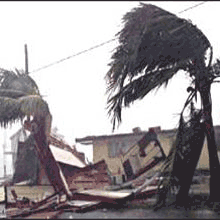
Hurricanes and Tornadoes can lead to disaster for your personal or commercial property. Whether your claim was denied or underpaid you deserve a fair insurance claim settlement. Contact a public adjuster to know your legal options.
Regardless of the type of damage that you have experienced in your home of commercial property a licensed public adjuster can help you collect more money on your insurance claim.
Even if your insurance claim has been denied by the insurance company an All American Public Adjuster can help you reopen a claim with your insurance company.
If your insurance company settled your claim and sent you a check which did not completely cover your damages you have a legal right to receive a free consultation to see if your claim can be reopened in order to receive a fair settlement for your property damage claim.
[footer1]
- Published in Damage Types
Tornado’s look fun on television but if your home was damaged because of a tornado, the damage caused can sometimes be severe and the problems can start to mount the moment the tornado hits. Wind damage can be devastating. Flying debris can cause roof damage; you can be left without power, water, heat and other essentials. You may be forced to relocate for an extended period of time which creates additional costs to you. When a tornado hits, you must ask yourself a few questions before doing anything. First and foremost you must assess the damage to determine if you and your loved ones are safe. You must also preserve the loss by taking as many pictures as you can, if you are able to do so. Before contacting your insurance company call All American Public Adjusters, Inc. All American Public Adjusters, Inc. has expert adjusters who specialize in assessing damage and dealing with the insurance providers in order to secure the money you need to fix your home. Don’t go up against the insurance company without proper representation. Policy language can be very confusing and tricky and saying the wrong thing when filing a claim and be detrimental and costly. If you were a victim of a tornado, contact All American Public Adjusters, Inc. today and let us get you the money you need. Don’t forget the burden of proof solely lies on the policyholder. Insurance companies have their own adjuster. Why don’t you!
[footer1]- Published in Damage Types
 Claim Recovery Assistance for Destruction from Vandalism
Claim Recovery Assistance for Destruction from Vandalism
Vandalism is a problem in communities all over the country. Although more prevalent in big cities such as New York City and Los Angeles, no home is immune to acts of vandalism. What most homeowners don’t know is that most damage and losses suffered by vandalism is covered by homeowners insurance. If you were a victim of a home invasion the chances are good that you suffered more than just mental distress. Valuables such as jewelry, property damages such as broken doors, stolen copper pipes, and most other physical losses are covered by your homeowners’ policy. If you evicted a vindictive tenant who chose to take out his rage on your property, whatever damages your property suffered is covered by your homeowners’ insurance policy. If you have been a victim of burglary or vandalism, do not suffer any more than you already have. Contact All American Public Adjusters today and let us help you receive the money you deserve from your insurance company.
Regardless of the type of damage that you have experienced in your home or commercial property, a licensed public adjuster can help you collect more money on your insurance claim. Even if your insurance claim has been denied by the insurance company, All American Public Adjusters, Inc. can help you reopen a claim with your insurance company. If your insurance company settled your claim and sent you a check which did not entirely cover your damages, you have a legal right to receive a free consultation to see if your claim can be reopened in order to receive a fair settlement for your property damage.
[footer1]
- Published in Damage Types
One of the most common problems homeowners face with their air conditioning systems is sudden and seemingly inexplicable leaking. A/C window units tend to leak small amounts of water, which is normal, but when a central air conditioner begins to leak large amounts of water all over your floor, series damage can occur and it is not a problem that you can ignore. Especially those who have finished basements – water will accumulate and damage your furniture and belongings.
What Do I Do If My A/C Unit is Leaking Water?
The first thing to do is immediately turn off the a/c unit and stop and water flow. Call a A/C technician immediately! If water has saturated your flooring or any possessions you need to call you insurance agent and file a claim. If any water damage occurs it is essential that you get your insurance involved immediately.
Once you have contacted your insurance and filed a claim, the water needs to be mitigated/removed immediately. Call a professional mitigation company to assist you. This will ensure that your insurance company will not deny your claim due to what they consider “neglect.”
Next, call a professional at All American Public Adjusters! We can assist you in maximizing your claim. We work with water damage claims on a regular basis and we have a strong track record of helping homeowners get fully reimbursed for any damages.
If you’re A/C is leaking, get the professionals involved:
(1) call a A/C technician
(2) call a water mitigation company
(3) call All American Public Adjusters
– this will get you on the road for a quick recovery of your most valuable investment – your home.
- Published in Damage Types
[header1}
Will My Homeowners Insurance Cover Water Damage Due to a Leaking Dishwasher?
When your dishwasher leaks serves damage can occur especially in areas that you cannot see. When water is disbursed a lot of the damage occurs behind the dishwasher and on the cabinets and walls because you are not able to sop up the water.
If your dishwasher leaks, it is covered under your insurance policy as long as you act quickly. If you have a reoccurring leak that is not dealt with properly, your insurance may deny your claim under “neglect” or “improper maintenance”. If you respond quickly, and mitigate/remove the water quickly and damage occurs, your insurance company will cover the loss.
When Water Damage Occurs, Get the Professionals Involved
Homeowners who try to handle this sort of loss on their own usually get stuck with the bill. Once you see a leak call a technician immediately to resolve the issue. Additionally, hire a professional water mitigation company to remove and dry out the area properly. Your insurance company will reimburse you for any invoices paid. Lastly, water damage can be tricky and complicated. Hire a public adjuster to handle the claim for you. They will ensure that you are reimbursed fully for the loss and help you with your claim from start to finish. When you hire a public adjuster, this keeps your insurance company honest, and you will have a professional adjuster who works for you not the insurance company.
Let the professional insurance experts at All American Public Adjusters help you with your claim process. We will help maximize the claim amount and minimize the stress of a water damage claim.
[footer1]- Published in Damage Types
- 1
- 2


